These Luxury Biking Tours Let You Ride Alongside Your Favorite Cycling Stars
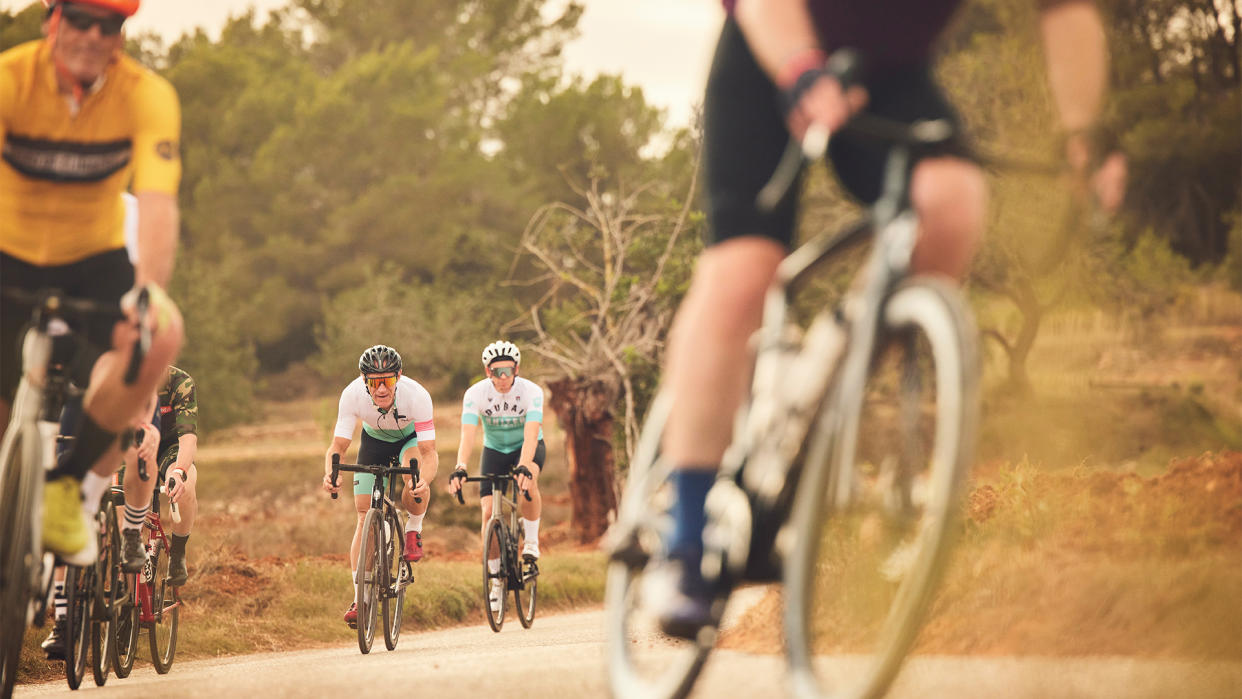
- Oops!Something went wrong.Please try again later.
- Oops!Something went wrong.Please try again later.
- Oops!Something went wrong.Please try again later.
It’s a balmy afternoon, and I’m riding my bike around an idyllic island in the Mediterranean. I keep glancing at the cyclist next to me—partly to make conversation but also to check that he’s really Geraint Thomas, winner of two Olympic gold medals, three world championships, and a Tour de France. I can’t quite believe my luck: I’m wheel to wheel with one of the sport’s greatest living athletes, and to top it off, he has a bruising hangover, enabling me to keep pace with him as if I were a pro. And yet, this extraordinary experience was not that hard to achieve.
Want to shoot threes with Steph Curry, have a kickabout with Lionel Messi, or catch a pass from Patrick Mahomes? Get ready to write a sizable check. The opportunity to rub shoulders with your sporting heroes—whether as part of a fantasy-camp afternoon or, for truly unfettered access, by buying the teams they play for—comes neither easy nor cheap.
More from Robb Report
Aston Martin's First EV Is Delayed Because of Lack of Demand
This Ultra-Rare Porsche 918 Spyder Could Fetch $3 Million at Auction
Ponant and the Smithsonian Just Unveiled 30 Epic Cruises for 2025
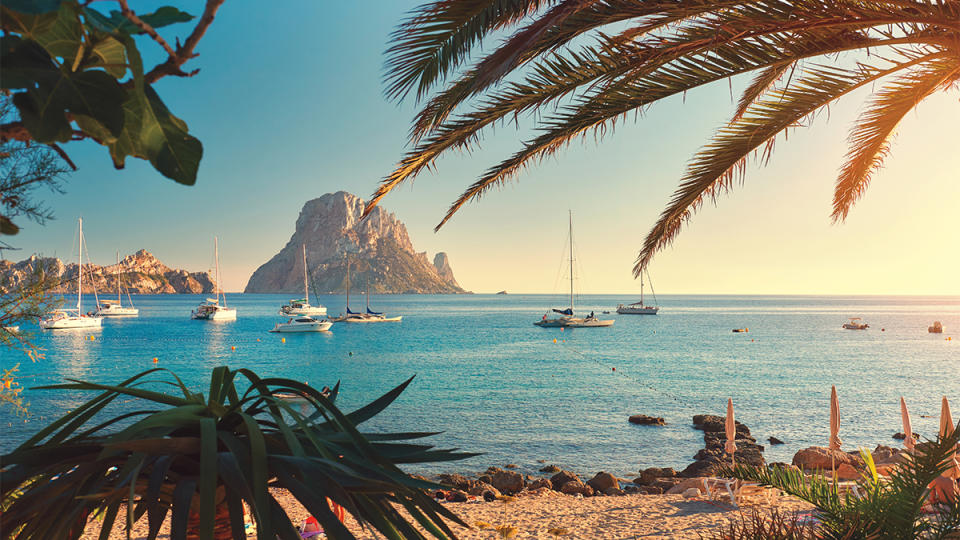
The exception, it seems, is cycling. Consider my recent long weekend on Ibiza with Thomas. I might also have joined Eddy Merckx, the Pelé of cycling and probably the greatest rider ever to have turned a pedal, or six-time Olympic gold medalist Sir Chris Hoy, or any one of a litany of elite athletes who have rolled out side by side with guests on a LeBlanq tour.
Founded by British former pro cyclist–turned-entrepreneur Justin Clarke, LeBlanq aims to provide superior holidays on two wheels and is part of an explosion of start-ups and buyouts in the multibillion-dollar luxury-cycling space. It offers around a dozen itineraries each year, in regions with spectacular scenery—think the Norwegian fjords and the Scottish Highlands—and particularly those with an oenological link, such as Champagne, Rioja, and South Africa’s Constantia Valley. On each trip you’re guaranteed at least one titan of the sport, a luxury hotel as accommodation, and a wellness program for those in attendance but not cycling. A superstar DJ may headline the post-ride party, and there’s always a celebrity chef providing nutrition more appealing than the vast quantities of rice that pros typically cram down during a race.
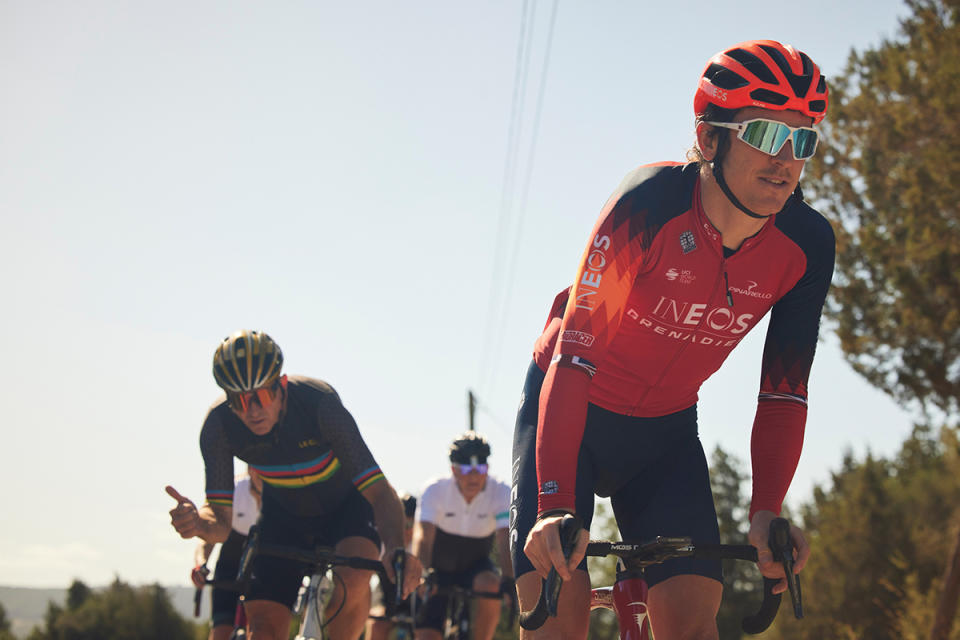
Before starting LeBlanq in 2020, Clarke built the Taste food festivals, which showcase the work of the best fine-dining restaurants in 19 cities around the world (it has since been sold to IMG), and his contacts run as deep in gastronomy as in cycling: Michelin-starred chefs Nathan Outlaw and Angela Hartnett, among many others, have cooked for LeBlanq guests. And here gluttony is justified, with depleted riders needing to fuel up on all that sensational food after burning thousands of calories on the road and in preparation for the following day’s outing. Plus, assuming you don’t have too bad a hangover, alcohol is useful as an extra carbohydrate.
Cycling has always been a democratic, accessible, mass-participation sport. Its recent surge in popularity around the globe has been driven by its health and environmental benefits, and involvement also flourished during Covid shutdowns, when gyms were largely off-limits. The activity is almost unmatched in its ability to let you sustain higher heart and calorie-burn rates for long periods, and its metronomic, meditative qualities have been shown to be good for your mental health as well: Riding with friends is social; riding solo brings solace.
But while the advantages of the sport are universal—and entirely unrelated to the price of your bike—those enthusiasts willing to spend can majorly amplify what can quickly become an addictive and all-consuming pastime. For example, while you can’t buy a current F1 car, you can purchase a bike nearly identical, save a few prototype parts, to that of a Tour de France winner. Or you can engage a custom builder to create a model tailored to your precise dimensions, color preferences, and specifications—like a Savile Row suit, but far more expensive. (An elite commissioned machine can run from around $10,000 to upwards of $25,000.) You can wear stylish cycling gear created by Sir Paul Smith while riding it—the British designer once aspired to compete professionally, before injuries sustained in a major accident derailed those ambitions and he moved into fashion—and if rolling with Olympians on a LeBlanq excursion doesn’t appeal, you can book other operators’ trips that let you pedal across frozen Mongolian lakes or the game reserves of Botswana’s Okavango Delta.
Cycling allows you to sustain higher heart and calorie-burn rates for long periods, and its metronomic, meditative qualities have been shown to be good for your mental health.
A recent analyst report estimates that the market for luxury cycling will increase by a third, to $19 billion, over the next five years. The poster child for this booming sector is luxe clothing brand Rapha, founded in London in 2004; a private-equity firm run by Walmart heirs Tom and Steuart Walton, themselves keen cyclists, bought a majority stake in 2017 for $260 million. Similar deals continue. Last year, mining billionaire Ivan Glasenberg, another devotee, paid an estimated $252 million for controlling interest in high-end Italian bike brand Pinarello, a name as resonant to cyclists as Ferrari and Maserati are to motorists.
Despite the enmity that some (erroneously) perceive between those two tribes, the luxury car marques are eager to be part of the cycling surge: Smart brands go where their customers are, and these customers are increasingly out on their bikes. Which explains why Aston Martin and Lotus each launched radical, innovative bikes—costing far more than even Geraint Thomas’s Tour-winning Pinarello—at the Rouleur Live cycling show in London late last year. And why, along with Rapha, Marqués de Riscal wine, Laurent-Perrier Champagne, InchDairnie Distillery, and Bianchi bikes, both Aston Martin and Porsche have partnered with LeBlanq to provide the “team” cars that follow each group of riders with supplies and spare bikes.
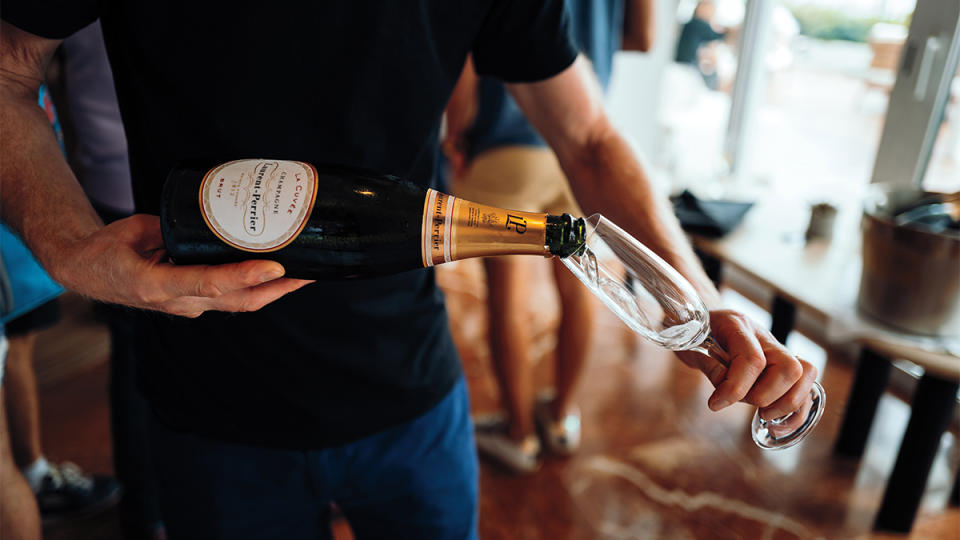
In my 30 years as a journalist, this was the first time I needed to train for a story. I signed up to ride at LeBlanq’s event on the Spanish island of Ibiza alongside Thomas, who at 37 remains a contender for the great prizes of the sport, having only lost his lead in last year’s Giro d’Italia on the penultimate day. Just before flying to Ibiza, he announced that he would compete on billionaire Sir Jim Ratcliffe’s INEOS Grenadiers team for another two years.
Thomas is a world-class professional athlete performing at the pinnacle of one of the toughest endurance sports. I am, well, not. What on earth was I thinking, agreeing to ride with him? I’m 49. I’ve cycled semiseriously since I was 12 and was a solid midrange finisher when I competed for a while in my teens; I gave up after realizing that racing hurt and also that I was no good at it. Now, even with no trophy or purse at stake, I feared the humiliation of being “dropped”—parlance for getting left behind—not only by Thomas but by the hyper-alpha, ultra-fit bankers and lawyers I imagined to be the clientele at a LeBlanq event.
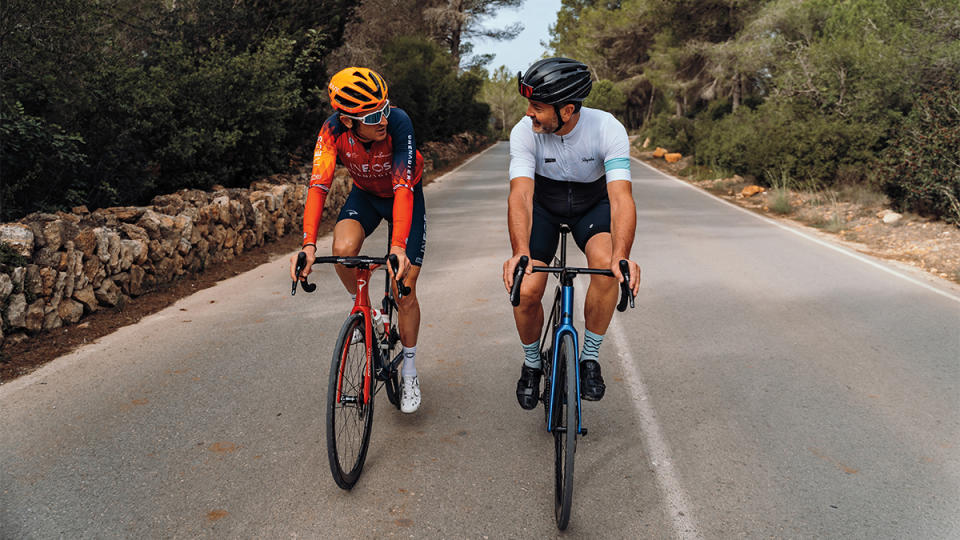
So I trained for three months, shedding 12 pounds and getting my power and pace up slightly. I thought I’d better upgrade my bike, too, so I called German maker Canyon, the Porsche of cycling, whose bikes I’ve owned for years. The Canyon folks saw my predicament, agreed that my eight-year-old model wouldn’t cut it, and instead loaned me an Ultimate CF SL Disc 8.0 Aero. It’s similar to the machine favored by Thomas’s Tour rivals on the Movistar and Alpecin teams (the Aeroad CFR Di2, priced at about $10,000) and was the Financial Times’s “best race-oriented bike” of ’23, but at around $7,000 costs a lot less than his roughly $15,000 team Pinarello Dogma F. Lance Armstrong once wrote that it’s not about the bike, but I figured I should take all the help I could get.
I needn’t have worried. I arrived at the beachfront Hotel Riomar in Santa Eulalia, which LeBlanq had taken over in its entirety, and immediately had the new bike whisked from me and brought to the secure service area, where LeBlanq’s mechanics checked it over, added a race-style plaque with my name and rider number under the seat, and hung it on the racks in the company of what was probably well over a million dollars’ worth of bikes that had been flown in from the U.S., the Middle East, and Europe by the 120 other participants.
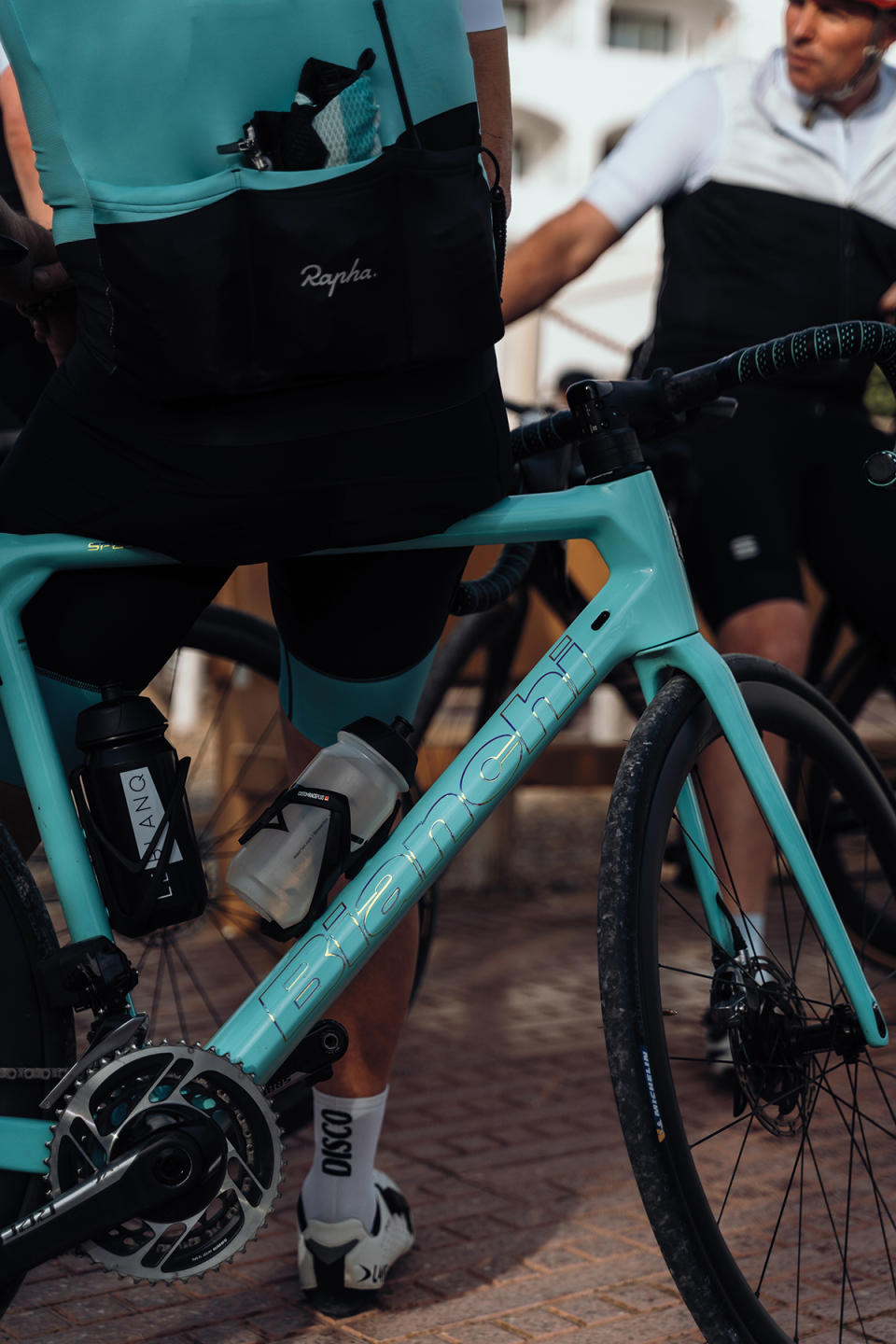
Inside the hotel I was handed my Rapha x LeBlanq team gear and a bag of energy bars, gels, and drinks for the four days of cycling. So far, so pro. But then someone pressed a glass of Laurent-Perrier into my hand, and then someone else topped it up, and I began to realize that for all LeBlanq’s race-ready image, the reality might be a bit more Citi Bike through Central Park—if you want it to be, anyway.
Riders are split into groups of 10 to 12 each based on ability and likely speed. Each is led by someone very experienced, often an ex-pro, who takes care of the directions and pace, with a support car following. For the short opening jaunt of less than 20 miles, I decided to roll with the gentlest squad, led by the effervescent former racer Monica Dew, who ensured that the members of her pleasingly mixed group never felt stretched. (The pros trade cohorts over the course of the weekend so everyone gets a moment to bask in their reflected glory.) There were participants of all ages and abilities, some wearing running shoes rather than the clip-in cleats favored by the more hard-core, and some on battery-assisted e-bikes.
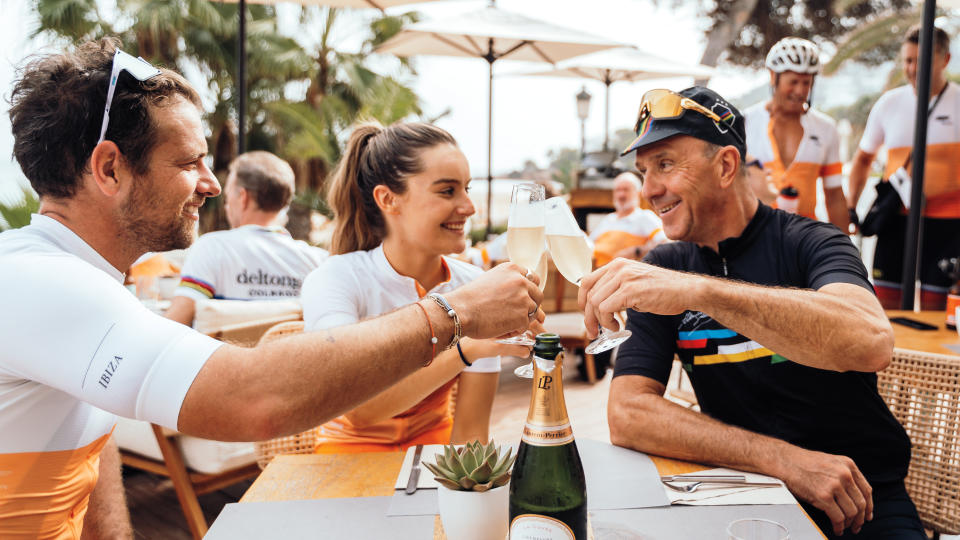
A significant part of the appeal of such events is the experience of riding in a peloton. Having others around you deflects headwinds, reducing the effort required to maintain a given speed by up to 40 percent. You find yourself being sucked along by the group, feeling like a pro, going faster than you ever could on your own while comfortably holding a conversation with the person next to you.
And what conversations. Wearing the same bib is a great leveler, and the collaborative nature of a group ride means confidences are quickly shared. As well as the expected doctors, executives, and pilots, I found myself moving with the founders and funders of tech firms, a world-leading cybersecurity expert, a man my age who’d had a heart attack just a year before, a couple who’d taken a previous LeBlanq trip for their honeymoon, and the arena-filling British DJ Pete Tong, perhaps best known for exporting house music to the world. Another turned out to be Nick Evans, managing partner of private equity firm Active Partners, chairman of Rapha, and the guy who gave luxury cycling its defining moment by brokering that $260 million sale to the Waltons.
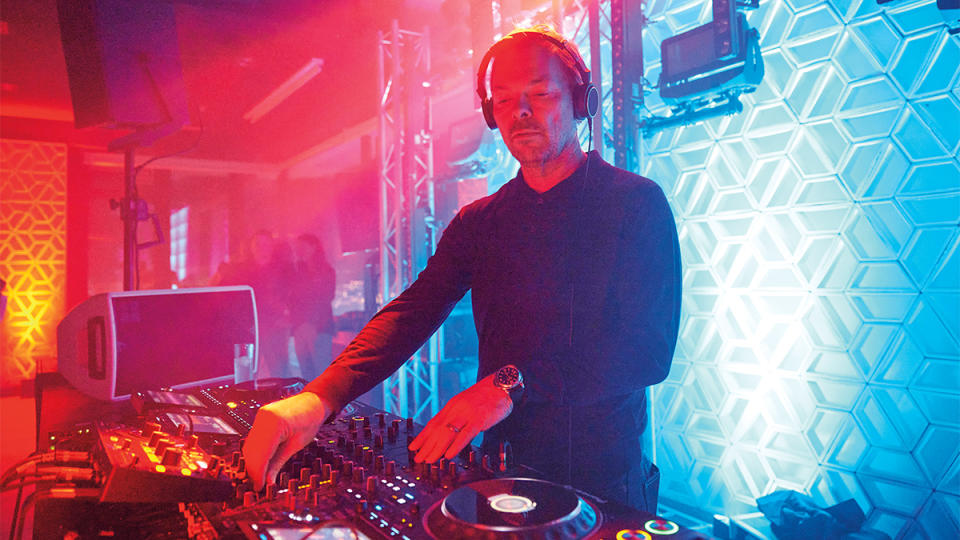
The chats were so good and the concentration required to keep up in a fast, tight, well-disciplined group so intense that I needed to remind myself to look up and absorb the extraordinary scenery. Ibiza’s rural roads are mostly well surfaced and lightly trafficked. Temperatures in the 70s were perfect for cycling, and the air was scented with the pine needles that lay in piles at the edge of the road. There were few serious climbs—just enough to keep things interesting—and they often rewarded with a view over yet another deserted, pine-fringed beach and the azure Mediterranean beyond.
For non-riding partners or those taking a day off, TV sports presenter and former track-and-field athlete Orla Chennaoui had curated a comprehensive wellness program with sunrise yoga sessions, breath-work classes, and restorative hikes through the local hinterland. But Ibiza is perhaps better known for the un- wellness programs of its nightlife, and a bit of that attitude permeated the LeBlanq trip, with some very well-lubricated after-ride fetes. My partner, Sophie, not a cyclist and there ostensibly for the yoga, got us on the guest list for the season-closing party at Pikes, Ibiza’s original boutique hotel and still a hedonist’s playground, in whose swimming pool Wham’s “Club Tropicana” video was filmed in 1983. I demurred, extremely reluctantly, as I was due to join a faster group for 100 miles with Thomas the next day. My alarm was set for 6:45 a.m., and I didn’t want to wreck three months of training with one night of clubbing.
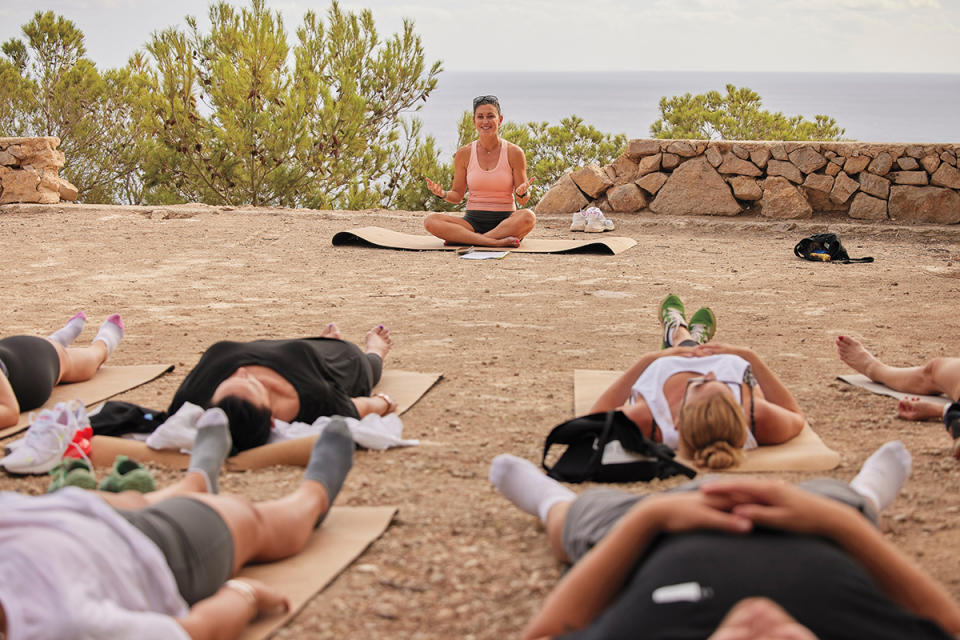
Thomas, however, did not decline. In a later interview with The Times of London, he admitted to having been drunk for 12 out of 14 nights during his brief postseason break from racing and training; we were responsible for two of those. He finally rolled back in from Pikes at 5 a.m., and a couple of LeBlanq guests gleefully claimed that they’d not only biked with their hero but shared a drunken dawn cab ride with him.
Despite the colossal respect he commands, he was given an amused, ironic, slow handclap when he appeared well past the start time that morning.
But even when you know he has slightly disabled himself, there’s something eerie and disconcerting about standing in your kit astride your bike, ready to set off, when a world champion and Tour de France winner appears dressed in the same INEOS team uniform and those hallmark white shades you’ve watched him wear on television for years. Imagine standing on your neighborhood court, high-tops laced, ball in hand, and seeing LeBron James appear at the other end.
Thomas is a world-class professional athlete competing at the pinnacle of one of the toughest endurance sports. I am, well, not.
Again, I needn’t have worried. Usually a very funny, voluble, sometimes indiscreet character, Thomas was unusually quiet in the opening miles, hanging his head over his handlebars every time we stopped. “Oh Ben,” he sighed at one point, “what I did last night… I just don’t know if it was worth it.”
The conversation improved as his hangover cleared. He enjoys the lifestyle of a major sports star—the house in Monaco, fine taste in watches, and a Porsche 911 Turbo his wife bought him as a birthday present—but he remains connected to his Welsh roots and retains a surprising degree of impostor syndrome for a man who has won so much.
“I just take it for granted that I can come along and ride my bike in amazing places,” he told me as we pedaled. “But then you realize that people have paid a lot of money to do this, and it’s weird that they want to do this with me, even though I know I’ve won some stuff.
“But cycling ’s always been accessible like that,” he continues. “You don’t need a ticket to watch the Tour de France. You can just stand by the side of the road and watch us ride past, and even touch us.
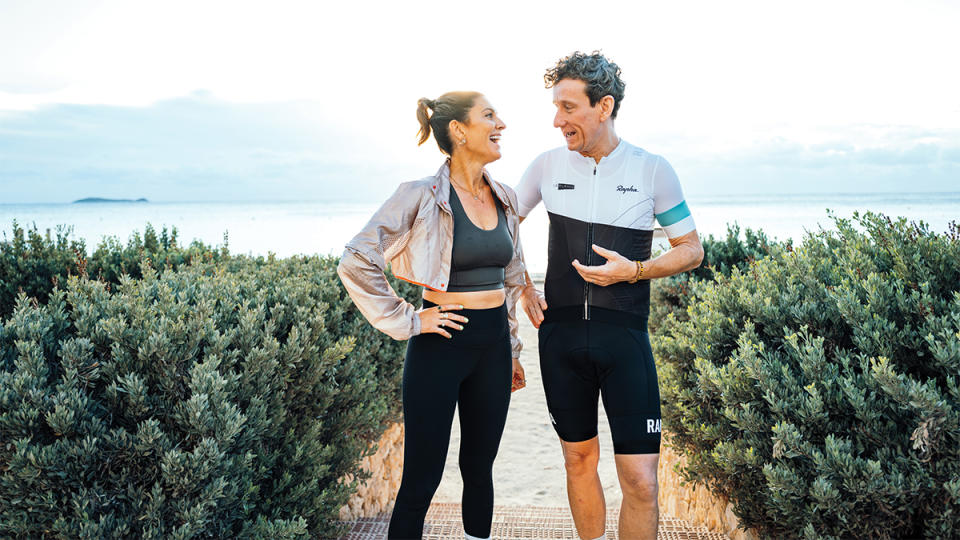
“When I was 14, I went to the Netherlands to watch a race. One of the big teams rode to the start line from their hotel, and me and my mates just rode with them. I’ll always remember that. And the thought of people wanting to do that with me now, it’s mind-blowing.”
Yes, well, same for those riding with Thomas. Even dozens of miles into the morning, it was still surreal to see those white shades inches away from me, and I admit that I asked for a selfie. I took some pride in the fact that he got out of the saddle when I did on climbs and also dropped down to his lowest gear. But then I noticed that, as we spoke, I was struggling to get my words out between breaths while G. (as he’s universally known in the sport) might as well have been sitting in an armchair. “You could have raced me if you’d wanted to,” he told me later. “After that 5 a.m. finish, I’d have let you win.”
That night, our last, he’d recovered sufficiently to fully enjoy the long weekend’s premier party, held at a rooftop bar and pool with spectacular sunset views of the sea. Nieves Barragán Mohacho, the Michelin-starred head chef at London’s buzzy Sabor Spanish restaurant, had flown in with her brigade to give the crowd what they wanted: carbs, mainly, in the form of the perfect tortilla (there was one more ride to be done the next day) but also bluefin tuna loin and the most incredible acorn-fed Bellota pork, marinated in sherry until it had acquired an almost beef-like color and richness.
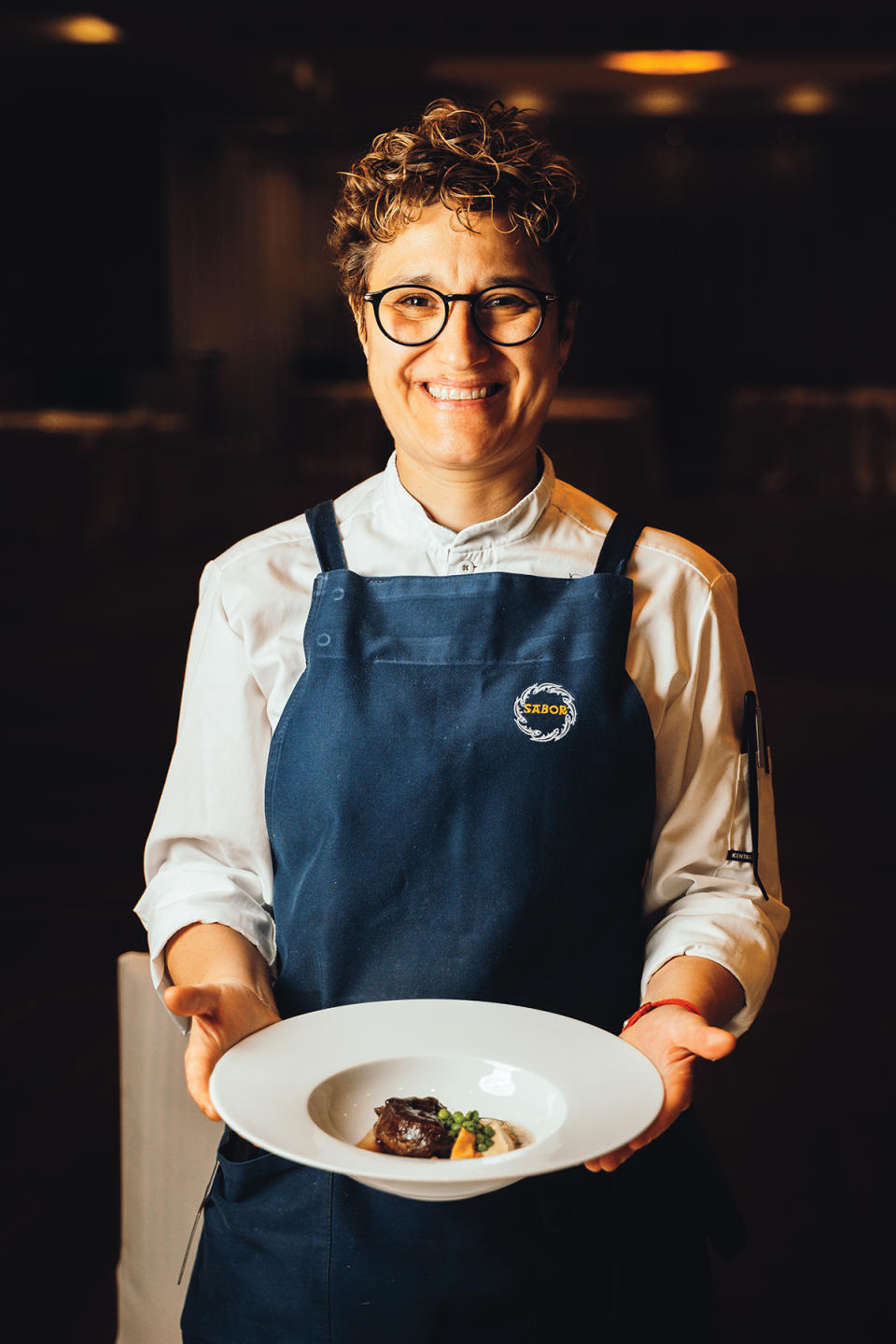
Then Pete Tong, who opened King Charles’s coronation concert and whose Ibiza Classics orchestral tour later played London’s O2 Arena, spun a private set for the hundred or so of us still up and dancing. For fans of Ibiza’s sun-soaked electronic dance music, this was a moment as seminal as riding with Thomas. I just couldn’t work out how, with all the cycling and dancing, I stepped on the scale when I got home and found I’d put three of those 12 pounds back on again.
Upcycle Your Vacation
When it comes to merging serious riding with high-end hospitality, LeBlanq isn’t the only game in town. Here, a few others to consider.
The Slow Cyclist
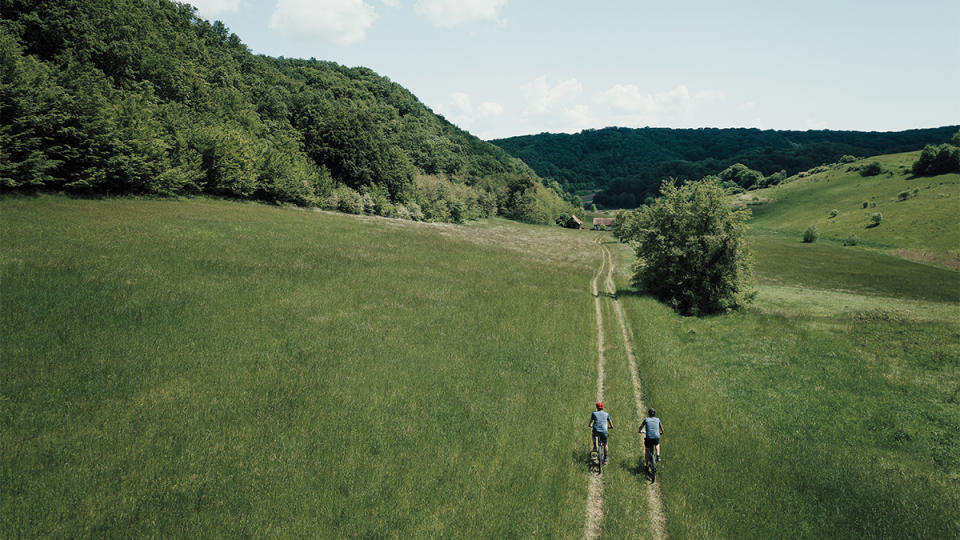
The reassuringly named Slow Cyclist was founded by British author Oli Broom, who spent 412 days riding—via 23 countries—from London to Brisbane, Australia, to watch a few games of cricket (and raise money for charity). The company is part of the “slow travel” movement, which aims to minimize your impact on local communities while maximizing your engagement with them—and what better way to do so than arriving by bike? The Slow Cyclist will put you on two wheels in locations you might never have considered, from the mountains of Transylvania to the volcanoes, lakes, and gorilla-filled wilds of Rwanda.
Cycling for Softies
As its name suggests, Cycling for Softies focuses unabashedly on the luxury hotels and Michelin-starred dining that punctuate its easy trips (e-bike optional)—“a gâteau in every château,” in the words of author and client Kathy Lette. The company operates in five European countries, with itineraries traversing the regions with the best comestibles, whether Provence or Portugal’s Douro Valley. Your bags are transported between hotels each day, and you ride at your own pace, following an app that even details the best cake stops en route.
Sportive Breaks
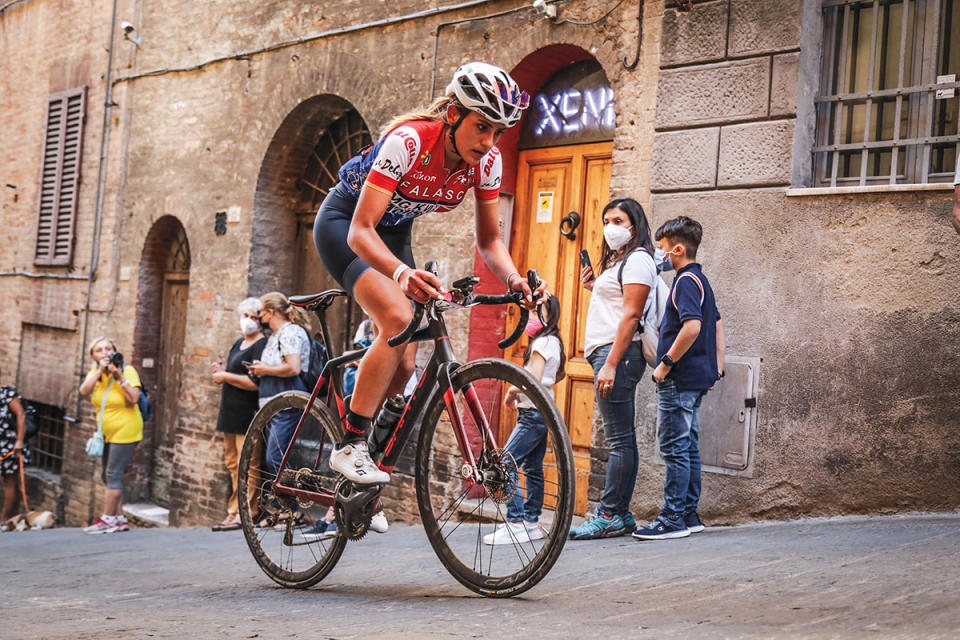
If you want to go harder than even LeBlanq can offer, Sportive Breaks will fast-track you into the most sought-after events of the year. From L’Étape du Tour, in which “civilians” take on a hard mountain stage of the Tour de France, to the roughly 195-mile-long Mallorca 312 and other spectacular closed-road, mass-participation events (known as sportive rides), this specialist eases the logistical pain, if not the physical. Our pick? The slightly gentler annual Strade Bianche, whose 54- and 88-mile routes over the white-gravel roads of Tuscany are bucket-list stuff for many.
Butterfield & Robinson
Established nearly 60 years ago, Butterfield & Robinson is the OG of the luxury cycling world. A coterie of loyal and well-heeled clients has followed the Canadian company into new fields, from safaris to superyacht charters, but bike trips remain its beating heart. Don’t bother packing energy gels or even your wheels: The aim here is seamless, stress-free travel, with itineraries curated by a firm with more- experienced hands and likely a broader range of destinations—covering Europe, Asia, South America, and Africa—than anyone else.
Trek Travel
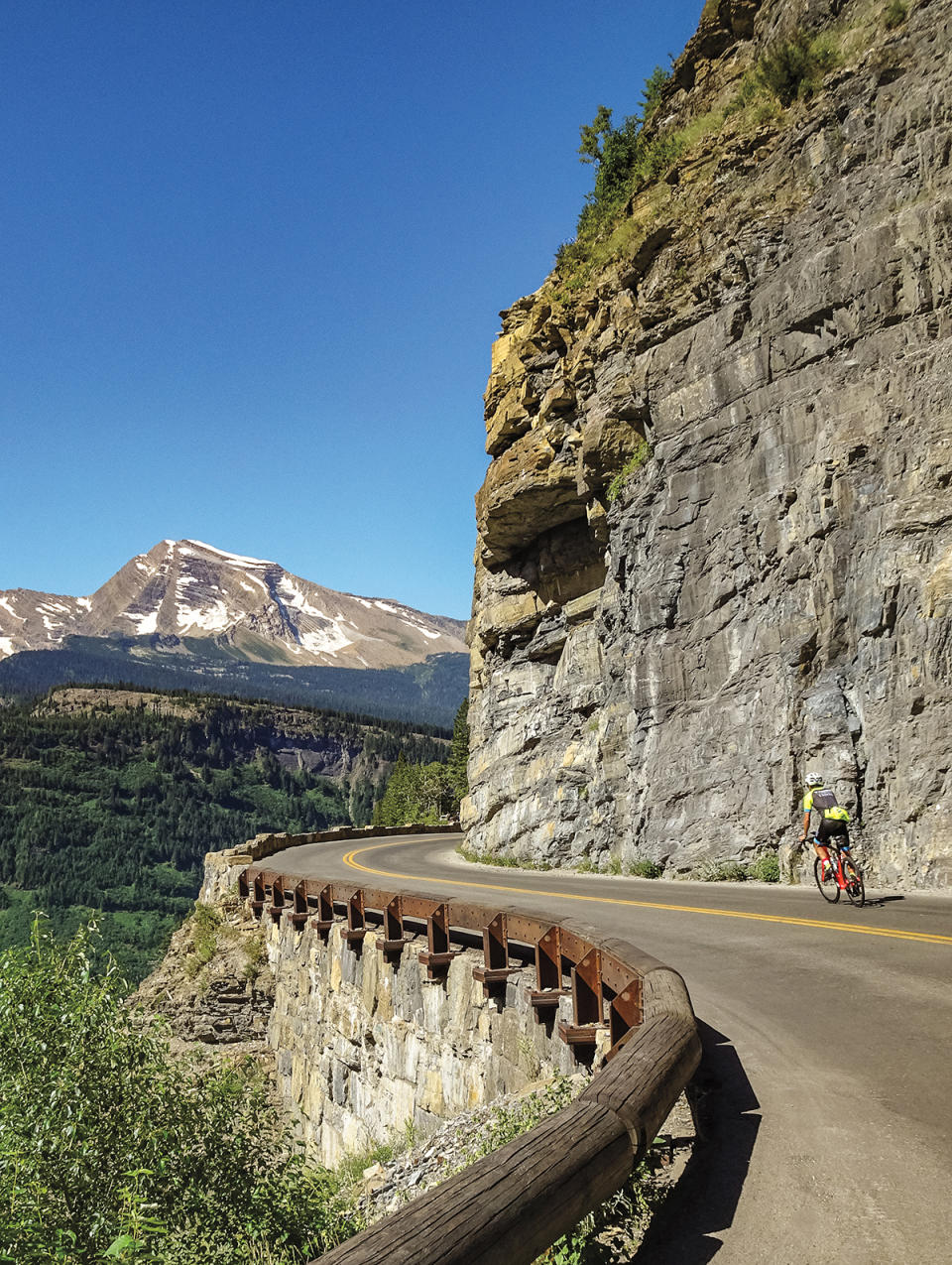
The travel wing of the behemoth Wisconsin-based bike maker is your go-to for North American trips, with itineraries in 18 U.S. states and one in Vancouver. But it can also take you farther afield—other destinations include Australia, Chile, and Japan—and organize custom private vacations for as few as one rider. As an official affiliate of the Tour de France and a team sponsor, Trek also offers excursions that follow the greatest race at a gentler pace: For $11,000, you get six nights in top hotels in Nice and Saint-Jean-Cap-Ferrat, with VIP access to the final stage of this year’s event.
Best of Robb Report
The Ultimate Miami Spa Guide: 15 Luxurious Places to Treat Yourself
The 7 Most Insanely Luxurious Spas in the World, From Tokyo to Iceland
17 Reasons the Caribbean Should Be at the Top of Your Travel Itinerary
Sign up for Robb Report's Newsletter. For the latest news, follow us on Facebook, Twitter, and Instagram.

